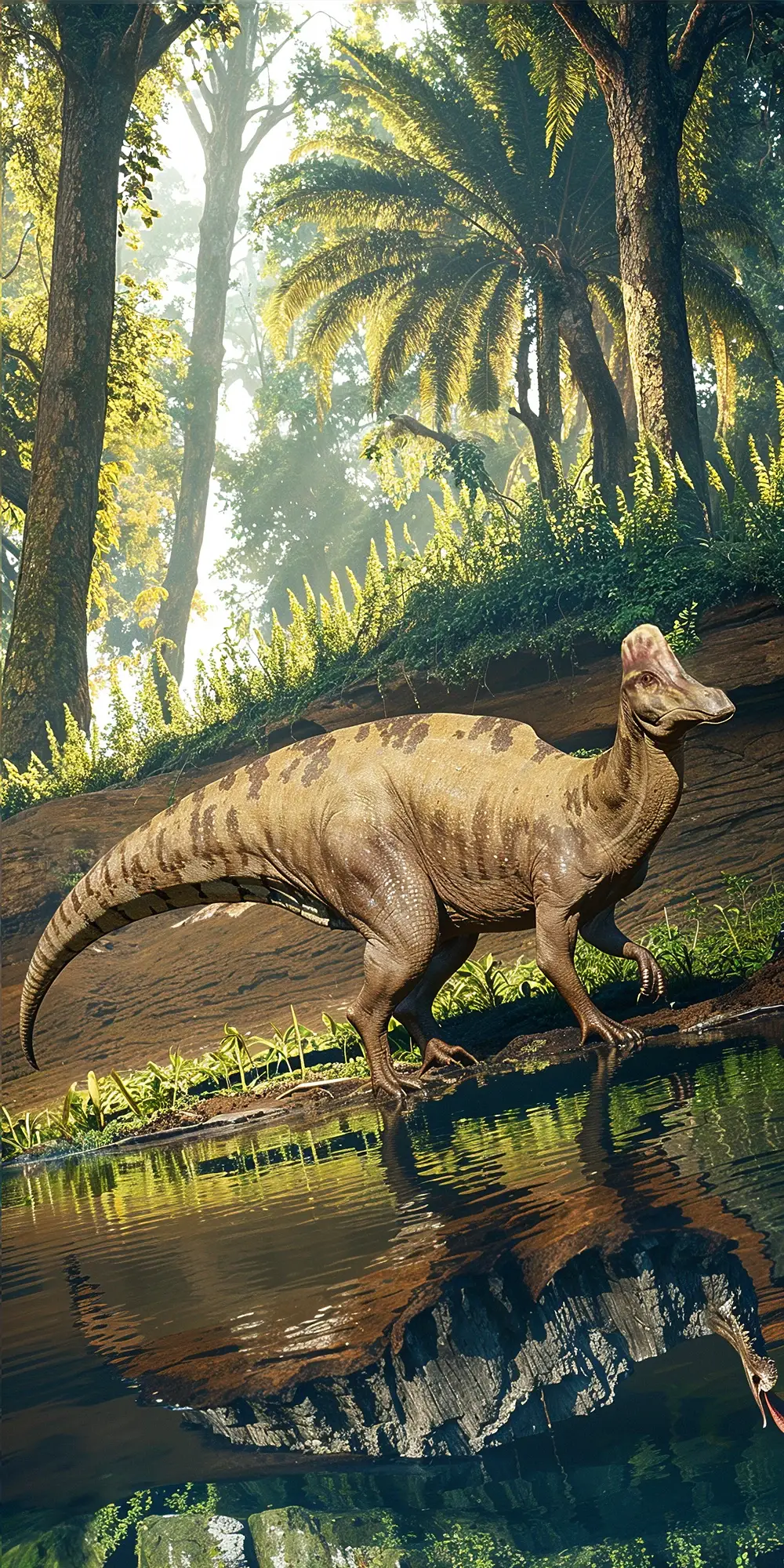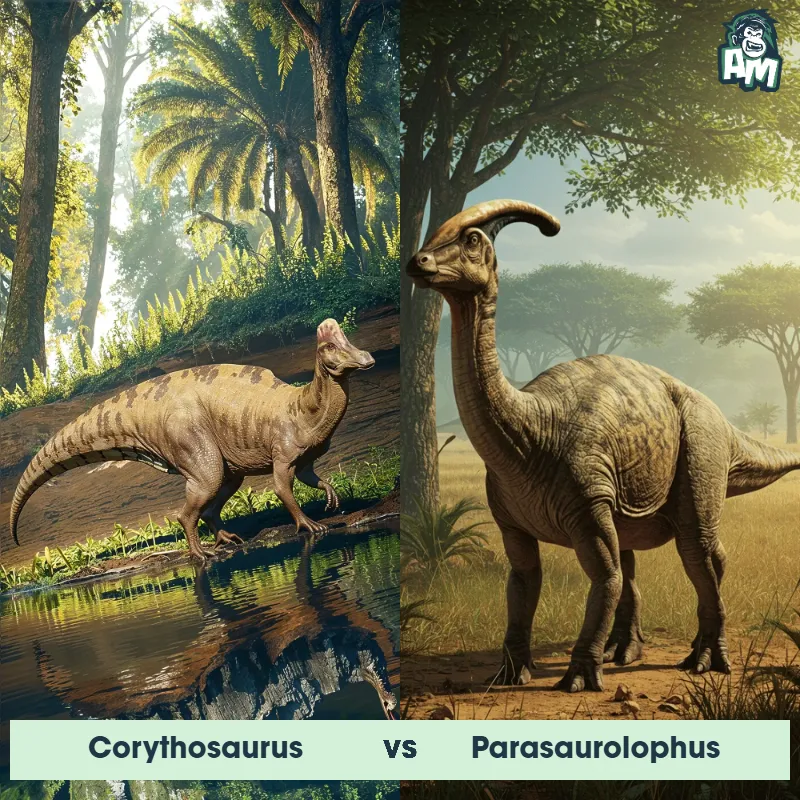The Corythosaurus
The Corythosaurus, also known as the helmeted lizard, was a dinosaur that lived during the Late Cretaceous period. It was a herbivore with a unique crest on its head that resembled a helmet. This dinosaur had a long, slender body, walked on two legs, and had a beak-like mouth for feeding on plants.

| Corythosaurus | |
|---|---|
| Size | Up to 30 feet (9 meters) in length |
| Weight | Around 4 tons (3.6 metric tons) |
| Speed | 22 - 28 mph (35 - 45 km/h) |
| Key Strength | Speed |
| Biggest Weakness | Defense |
| Scientific Name | Corythosaurus |
| Family | Hadrosauridae |
| Habitat | Wetland areas |
| Geography | North America |
| Diet | Herbivorous |
| Lifespan | 6 years - 13 years |

The Corythosaurus
The Corythosaurus, also known as the helmeted lizard, was a dinosaur that lived during the Late Cretaceous period. It was a herbivore with a unique crest on its head that resembled a helmet. This dinosaur had a long, slender body, walked on two legs, and had a beak-like mouth for feeding on plants.
Fun Fact: The Corythosaurus is believed to have used its crest as a resonating chamber to create loud calls, possibly for communication or to attract mates.
| Corythosaurus | |
|---|---|
| Size | Up to 30 feet (9 meters) in length |
| Weight | Around 4 tons (3.6 metric tons) |
| Speed | 22 - 28 mph (35 - 45 km/h) |
| Key Strength | Speed |
| Biggest Weakness | Defense |
| Scientific Name | Corythosaurus |
| Family | Hadrosauridae |
| Habitat | Wetland areas |
| Geography | North America |
| Diet | Herbivorous |
| Lifespan | 6 years - 13 years |
Corythosaurus Matchups
We use AI to simulate matchups between the Corythosaurus and other animals. Our simulation considers size, strength, and natural predatory behaviors to determine the most likely outcome.

Can't find the Matchup you want?
Create Your Own MatchupCorythosaurus: Diet, Predators, Aggression, and Defensive Behaviors
What did Corythosaurus eat?
Corythosaurus were herbivorous dinosaurs, meaning they primarily fed on plants. Their diet likely consisted of ferns, horsetails, and other vegetation that was abundant during the Late Cretaceous period.
Did Corythosaurus have any predators?
As herbivores, Corythosaurus would have been preyed upon by carnivorous dinosaurs such as Tyrannosaurus rex. These predators would have posed a significant threat to Corythosaurus populations.
Were Corythosaurus aggressive?
Corythosaurus are not believed to have been particularly aggressive dinosaurs. They were likely more focused on feeding and breeding rather than engaging in aggressive behavior.
Did Corythosaurus fight?
Corythosaurus are not known to have engaged in fights with other dinosaurs. They may have engaged in minor skirmishes for territory or mates, but they were not known for being combative animals.
How did Corythosaurus defend themselves?
Corythosaurus likely relied on their herding behavior as a defense mechanism. By staying in groups, they could deter predators and increase their chances of survival. Their large size and ability to run quickly may have also helped them evade potential threats.
What was Corythosaurus' biggest weakness in a fight?
Corythosaurus' biggest weakness in a fight would likely have been their lack of physical defenses. Without sharp teeth, claws, or horns for protection, they would have been vulnerable to attacks from more aggressive predators. Their best defense would have been avoiding confrontations altogether.
Fun Fact: Some researchers believe that the crest of the Corythosaurus may have changed color during mating season, serving as a visual signal for potential mates.
Fun Fact: Fossil evidence suggests that Corythosaurus traveled in herds, similar to modern-day grazing animals, for protection and social interactions.











